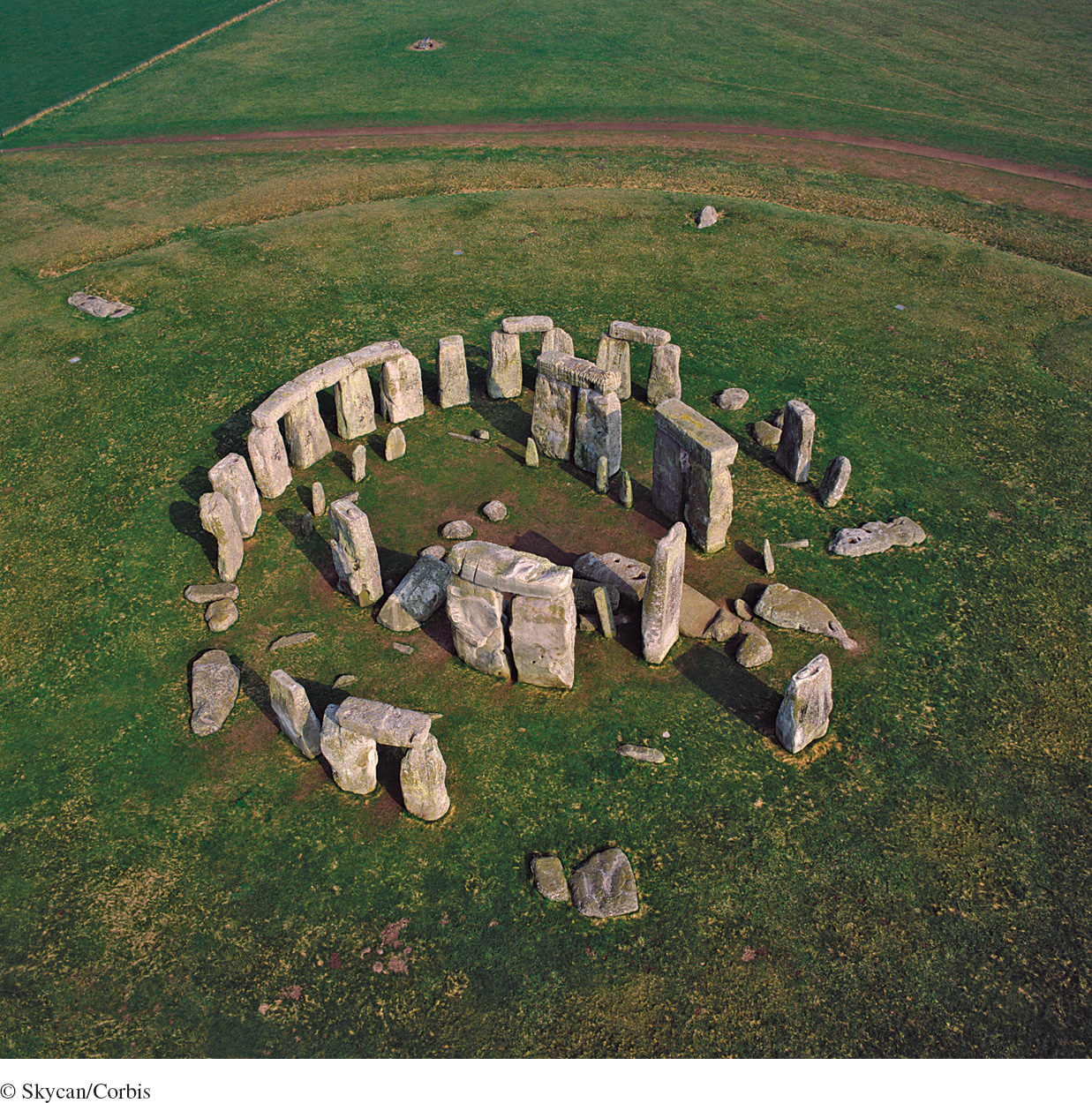Source 1.5
Stonehenge
Structures or buildings also offer insights into the life of people without writing. In the Neolithic age of agriculture, more large-
Almost everything about Stonehenge has been a matter of controversy and speculation. Prominent among these debates have been the questions of motivation and function. Why was it constructed? What purposes did it serve for those early farming peoples who used it? The discovery of the cremated remains of some 240 individuals, dating to the first five centuries of its existence, has convinced some scholars that it was a burial site, perhaps for members of a single high-
Whatever its purposes, still other controversies surround the manner of its construction. How were those huge slabs of rock, some as heavy as fifty tons and others coming from a location 240 miles away, transported to Stonehenge and put into place? Were they dragged overland or transported partway by boat along the River Avon? Or did the movement of earlier glaciers deposit them in the region?
Questions to consider as you examine the source:
- Have a look at the aerial photograph of Stonehenge. How would you describe its major features to someone who had never seen it? What questions about the site come to mind?
- What kinds of additional evidence would be most useful to scholars seeking to puzzle out the mysteries of Stonehenge?
Stonehenge

Notes
- Robin Melrose, The Druids and King Arthur (Jefferson, NC: McFarland, 2011), 94.
- Adrian Croft and Golnar Motevalli, “Stonehenge May Have Been Pilgrimage Site for the Sick,” Reuters, September 23, 2008, http://uk.reuters.com/article/2008/09/23/us-
britain- stonehenge- idUKTRE48M0R320080923.